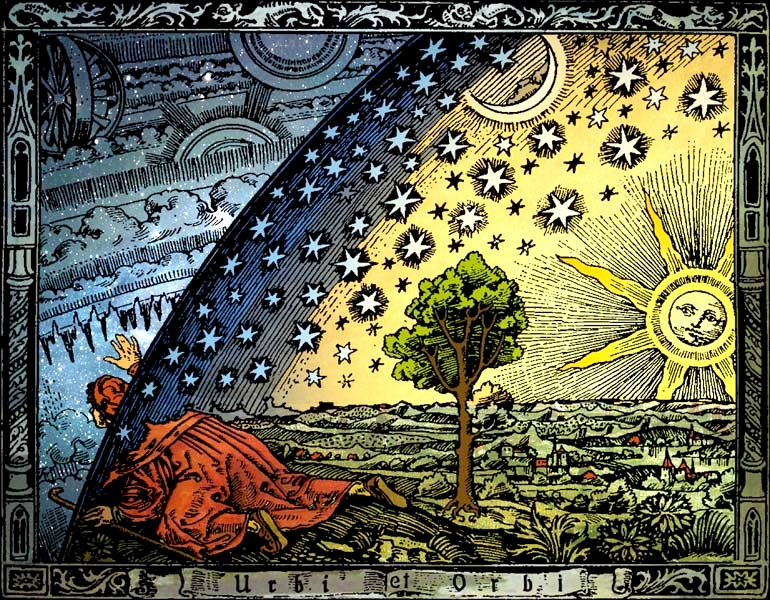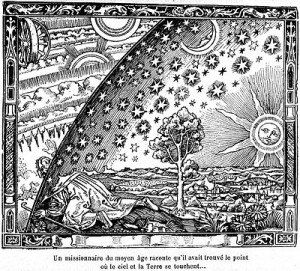Silvery Lunar Crescent Trembling In The Azure Sky
Sep 23rd, 2010 by admin
The idea of a pilgrim searching for the place where the Earth and sky meet might have been inspired by a legend associated with Saint Macarius of Rome, a legend which Flammarion recounts in detail in his book “The Imaginary Worlds and the Real Worlds”
Although it is plausible that Flammarion himself created the image, this has not been conclusively determined. Flammarion had been apprenticed at the age of twelve to an engraver in Paris, and it is believed that many of the illustrations for his books were engraved from his own drawings.
“What intelligent being, what being capable of responding emotionally to a beautiful sight, can look at the jagged, silvery lunar crescent trembling in the azure sky, even through the weakest of telescopes, and not be struck by it in an intensely pleasurable way, not feel cut off from everyday life here on earth and transported toward that first stop on the celestial journeys? What thoughtful soul could look at brilliant Jupiter with its four attendant satellites, or splendid Saturn encircled by its mysterious ring, or a double star glowing scarlet and sapphire in the infinity of night, and not be filled with a sense of wonder? Yes, indeed, if humankind — from humble farmers in the fields and toiling workers in the cities to teachers, people of independent means, those who have reached the pinnacle of fame or fortune, even the most frivolous of society women — if they knew what profound inner pleasure await those who gaze at the heavens, then France, nay, the whole of Europe, would be covered with telescopes instead of bayonets, thereby promoting universal happiness and peace.” — Camille Flammarion, 1880.
The Flammarion woodcut has been used in many contexts to illustrate either the scientific or the mystical quests for knowledge.

